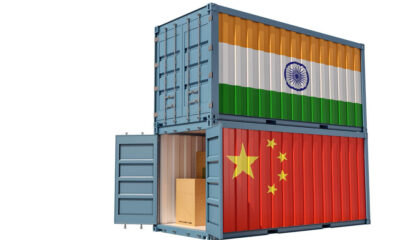Host: New Zealand Dates: 8 October-12 NovemberCoverage: Listen to home nations matches on BBC Radio 5 Live and BBC Sounds; follow live text commentaries of selected matches on the BBC Sport website and app.
So says New Zealand rugby star Ruby Tui. And rightly so: her country is set to host the biggest women’s Rugby World Cup in history.
It all begins on Saturday, with attendance records expected to fall on the opening day.
But what makes it the biggest and best of all time? And where is there work still to do?
New Zealand has embraced it already
Back in February 2020, when Eden Park was named as the venue for the final, filling the 50,000 capacity stadium was the lofty aim laid down by organisers.
That goal seems well within reach now that the venue – which will have a capacity of around 40,000 on Saturday – has been sold out for the tournament’s opening day, when there will be three matches at New Zealand’s largest sports stadium.
New Zealand are five-time champions and the rugby-loving population has already embraced the tournament as it is held in the southern hemisphere for the first time.
The World Cup will break attendance records on its opening day, with 20,000 the women’s rugby mark to beat from the 2014 tournament in France, and it will be a record attendance for a women’s sport event in New Zealand.
Players say it is hard to miss that there is a World Cup in town, with teams featured on banners and buses in Auckland and street murals springing up across New Zealand celebrating women’s rugby.
“We’re on a different level to all the World Cups that have happened before,” England captain Sarah Hunter said.
“I genuinely think this is going to be the biggest and best World Cup there ever has been.
“It feels like we’re on this crest of a wave and it’s going to explode into what women’s world rugby can really do.”
What could go wrong?
Only four of 12 sides at this year’s World Cup – England, Wales, New Zealand and France – have enough investment from their unions to be classed as professional, leading to wide gaps between some teams.
England have been fully professional since 2019, with that investment helping them to a record winning run of 25 Tests in a row.
Of course funds are not endless. They have money for contracts, but England and Wales still flew economy to New Zealand.
The hosts have upped their game too after disappointing defeats to France and England in 2021.
Men’s coaches Wayne Smith and Graham Henry are supporting the Black Ferns, with legendary fly-half Dan Carter lending a hand too.
But given nobody has been able to beat England in the last three years, the Red Roses’ dominance could be one of the tournament’s downfalls if they win every match comfortably on the way to victory.
That is not guaranteed, as New Zealand may enjoy a perfectly-timed resurgence or a one-off emotional performance from France could turn the tide.
Then there is the time difference for a UK audience. The home nations game with the latest start is the one between England and France at 08:00 BST on 15 October.
England scrum-half Leanne Infante said the side wants to “create a movement” like football’s Lionesses did with their Euro 2022 win, but the kick-off times may mean that has to wait until the Red Roses host the World Cup in 2025.
Covid-19 is already having an impact too, with New Zealand government regulations requiring anyone who tests positive to isolate for seven days.
England prop Shaunagh Brown is isolating and will miss the opening game – with players on high alert to make sure their World Cup is not interrupted too.
But the future is bright
Fast track. Transformation. Accelerate. Growth.
The message from World Rugby is clear. This tournament is just the beginning and what comes next will be even greater.
World Rugby chief executive Alan Gilpin hopes this year’s World Cup can “springboard” women’s rugby “into a golden era of opportunity”.
The governing body aims to support that with the launch of a new competition called WXV in 2023, which will allow 18 teams consistent access to Test matches at a competitive level.
That, in turn, should make the expansion from 12 to 16 teams for the 2025 World Cup more comfortable if money is invested to give players more time for rugby.
World Rugby wants more women on the touchline too and in 2020 launched an internship programme as it targets 40% female representation among coaches at the 2025 World Cup.
At this year’s tournament, Japan is the only side with a female head coach and 29% of coaches are women, with that number at 46% when all backroom staff are taken into account.
New fans for the sport are expected, with Gilpin suggesting the more open style of play in women’s rugby could help sell the tournament in New Zealand.
“In many respects there are areas of the women’s game that are leading the sport,” he said.
“The ball is in play more. There are less of the parts of the game that new fans find confusing possibly.”
New Zealand’s Tui put it more bluntly: “We are here to put on a show, we are an entertaining sport, I am going to entertain you.”
The Rugby World Cup begins in New Zealand on Saturday and BBC Sport explores why it is the biggest women’s edition yet.


 World News2 years ago
World News2 years ago
 World News2 years ago
World News2 years ago
 World News2 years ago
World News2 years ago
 World News2 years ago
World News2 years ago
 World News2 years ago
World News2 years ago



























